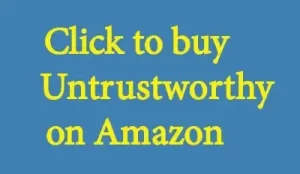Going From a Collection of Users to a True Community
What is a True Community?
I’ve written at least seven obituaries.
That is, perhaps, an odd thing to confess. But when Jill, Kevin, Paul, Joanne, Olen, Joan, and Mary all passed on, it was up to me to write something, to not only commemorate their lives, but to try to help comfort a grieving community.
I am not saying you will write as many, or even if you will ever write even one. And I certainly hope you will never have to, as they can be gut-wrenching. But it was with the first one – Mary’s – that it became manifest (if it was not already self-evident) that, to paraphrase the old Brady Bunch theme, this group had somehow formed a family.
How Can This Happen to Your True Community (Without the Tragic Part)?
But no one has to cross over to the other side in order for your collection of users to coalesce into a Community with a capital C. The secret is very simple, although many companies don’t want to hear it: it’s going off-topic.
Let us assume, for example, that your community is a corporate-run one. And the product is a soft drink. Corporate tells you to stay on topic, on message. However, your users are saying something very different.
For it is easy, as you’re talking about the soft drink, to slide into discussing foods eaten with it (frankly, for such a community you’d almost have to go off-topic. Nobody but a truly dedicated corporate marketer can talk about a soft drink 24/7). Food slides into a discussion of recipes. Recipes turn into a talk about entertaining. And then suddenly you’re off to the races and talking about family relationships.
Corporate tries to pull you back on topic. Yet your users pull the true community ever further away. And they pinball from family relationships to dating, raising children, and elder care, if you let them.
The Community Manager’s Role
Here is where you, as the Community Manager, can talk to Corporate and forge a compromise. Corporate needs for people to talk about the product, tout it, and virally promote it. And they need people to make well-ranked (on Google) topics about it. Corporate may also realize that they need to hear the bad news about the product as well. The users need to talk.
So make a compromise. Create an off-topic area and move all off-message topics there. And be fairly loose with your definition of what’s on topic. In our soft drink example, the recipes topics, even if they don’t use the product as an ingredient, are still close enough so you can consider them on topic.
Also, don’t be surprised if the corollary is true. Hence topics that begin on message veer off it, even by the time of the first responsive post. That’s okay. Those topics should still be considered to be on message. Because Google is far more concerned with a forum topic’s title and initial post than with its tenth response.
The Benefits of the Off-Topic Section
Don’t be shocked if your off-topic section becomes a large one. And recognize that you and your Moderating staff (if you have one) may need to make on message topics in order to continue creating germane content. But your true community will be talking and the site will be a lively one.
It’s a party that’s going nonstop, your users will stick around and from this you can build a marketing database. And that is one of the standard corporate aims behind creating a community in the first place.
So when your users start talking about life events, such as births, school, divorce, moving, jobs, marriage, children and, yes, deaths, it matters. And when they start supporting each other through each of these phases, it marks a bright line distinction between a haphazard agglomeration of users and a true team of like-minded individuals.
Finally, that team, that family, that army, is what being in a true community is really all about.
Want More About Community Management?
If my experiences with community management resonate with you, then check out my other blog posts about how online communities work.
Community Management Tidbits
Here are some posts about my years in community management, and what I’ve learned.
• A Day in the Life of a Community Manager
† Analytics
• Going From a Collection of Users to a True Community
† Risks of a Community Without Management
• Are Off Topic Posts Ever Okay?


You must be logged in to post a comment.